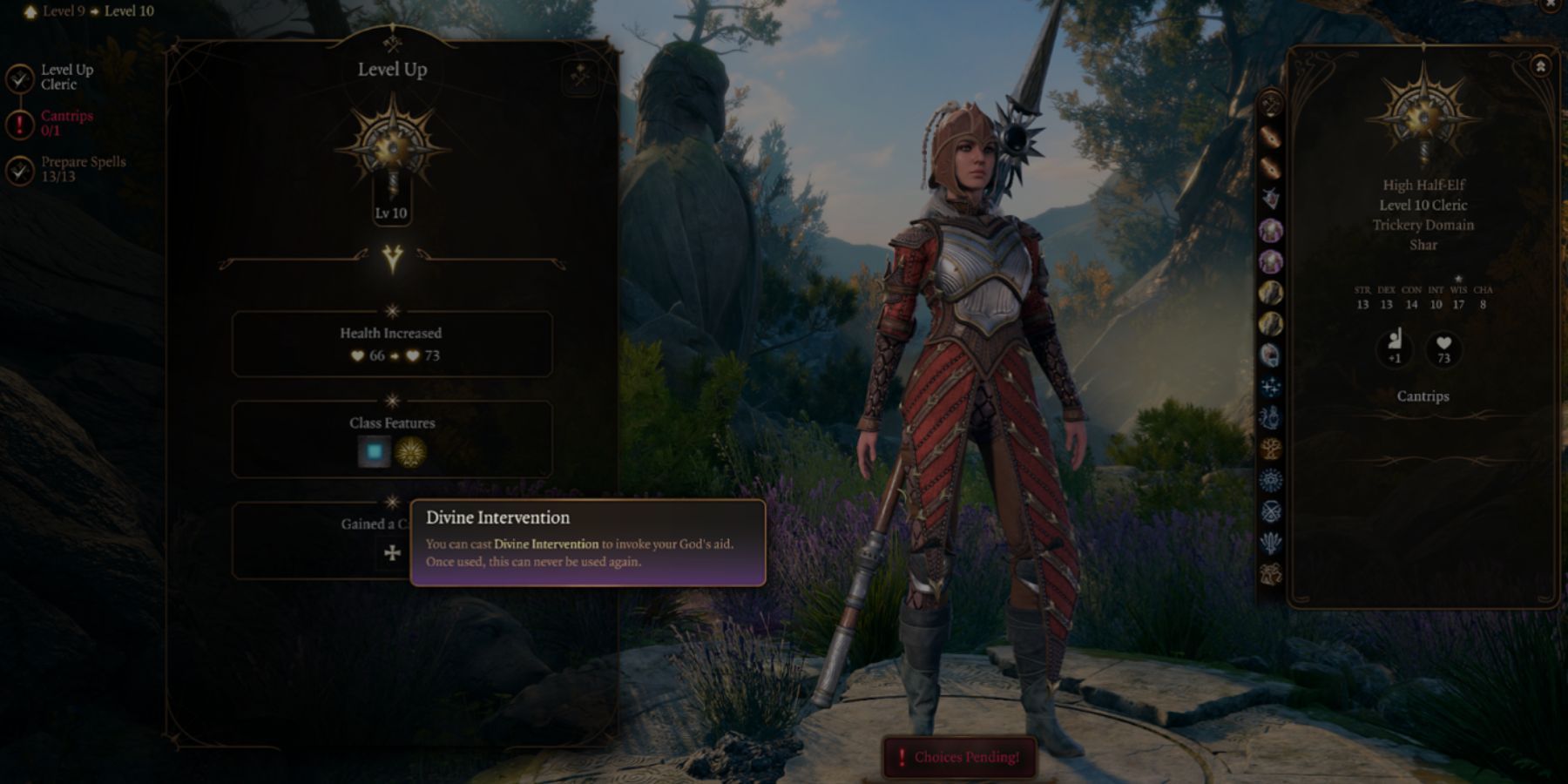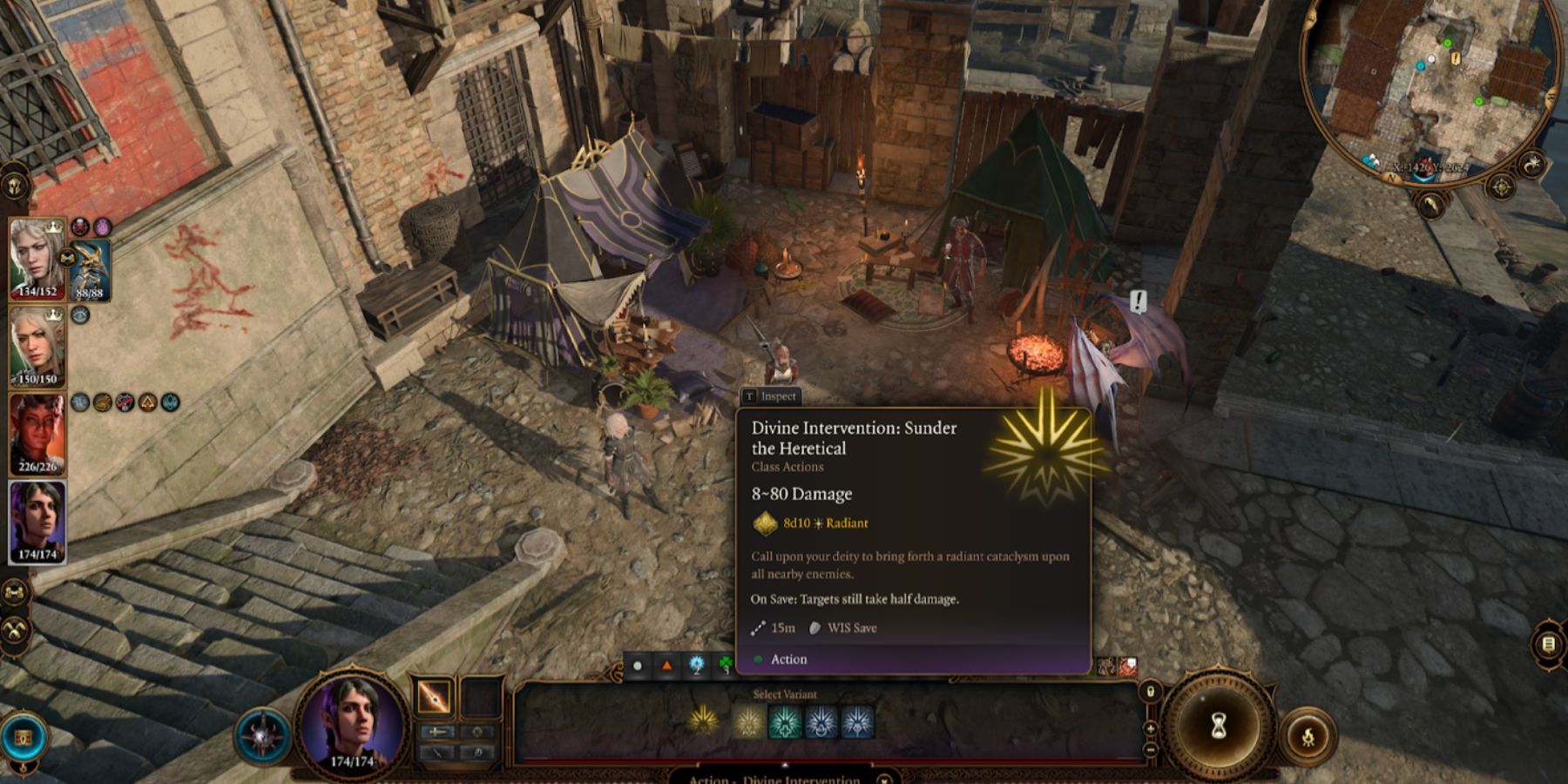Each class in Baldur’s Gate 3 has a large arsenal of unique abilities. But few things compare to Divine Intervention, which is only available to Clerics. Although this ability is limited to one use, it can provide an advantage both in a specific battle and the passage in general. Therefore, in this guide, we will tell you how to use Divine Intervention in Baldur’s Gate 3.
Divine Intervention is undoubtedly one of the most useful abilities of any class. This is not surprising, since it has 4 variations that are suitable for different situations. Additionally, players can use a trick to use this ability multiple times.
Baldur’s Gate 3: Where to Buy a Statue For Your Camp
You can buy a statue for your camp in Baldur’s Gate 3. Get one if you have the gold.
What Is Divine Intervention in Baldur’s Gate 3?
At first glance, it may seem that this ability is a spell, but in reality, Divine Intervention is a unique class feature that is only available to Clerics at level 10 in Baldur’s Gate 3. By spending Action, the Cleric can turn to their deity for help. This ability can only be used once per playthrough per character, so if you have more than one level 10 Clerics in your party, you can use it multiple times.
Such a limitation is not surprising, since it is literally too powerful to be able to wield multiple times. Each of the four Divine Intervention options can save your entire party, including the long term:
- Arm Thy Servant – A legendary mace +3 appears in the hands of the Cleric.
- Sunder the Heretical – You deal massive damage to all enemies within a 50ft radius.
- Opulent Revival – You resurrect or revive nearby allies.
- Golden Generosity – A chest will spawn in front of you with various supplies, including Healing Potions.
How to Use Divine Intervention in Baldur’s Gate 3
As you can see, Divine Intervention is a highly variable ability, but its one-use limit means you need to use it wisely. At the same time, saving it until the last resort can also be wasteful. Therefore, below, you can learn more about each of the Divine Intervention variations and how they can be used in Baldur’s Gate 3.
Baldur’s Gate 3: Where to Find Gortash’s Parents
Gortash’s Parents have a residence in the Lower City. Find them to learn more about the tyrant in Baldur’s Gate 3.
The Arm Thy Servant Devine Intervention, Explained
Devotee’s Mace, which you receive from your deity, is an excellent weapon. It would be more accurate to say that it is one of the best, since, until Act 3, you will not find anything better. In addition to dealing an extra 1d8 Radiant damage, it also has the Healing Incense Aura ability. By covering themselves with an aura, players will be able to restore 1d4 HP for themselves and nearby allies every turn. And although it lasts no more than 10 turns per Long Rest, it can save you more than once.
And since you can summon this weapon outside of battle, we will do this as soon as you reach level 10. This is an especially good option if you also have Cleric characters in your party. Even after their death or respecing, the weapon will not disappear.
The Sunder the Heretical Devine Intervention, Explained
By calling on the power of your deity, you can bring down punishment on enemies who threaten you and your companions. Sunder the Heretical deals 8d10 Radiant damage to all enemies within 50 feet. If they succeed in the Wisdom saving throw, they will still take the damage, but it will be reduced by half.
This variation of Divine Intervention in Baldur’s Gate 3 is suitable for any battle given that, with just one action, you can turn the outcome of the battle in your favor. For this reason, you’ll want to save it for really dangerous battles against multiple enemies, such as the boss fight in the Temple Of Bhaal.
Baldur’s Gate 3: Best Weapon Types, Ranked
There are plenty of weapon types in Baldur’s Gate 3, but only some of them give players enough power to topple the Absolute and its armies.
The Opulent Revival Devine Intervention, Explained
This is another strategically important ability as it can resurrect your fallen friends and restore their HP to half. At the same time, those allies who are still alive will fully recover as if they were on a Long Rest. In other words, all their class skills, HP, and spell slots will also be restored.
You should save Opulent Revival for the stages where you will have to fight without rest for several battles in a row. And, of course, it will make battles with challenging bosses much easier, especially those that you will encounter in Act 3.
The Golden Generosity Devine Intervention, Explained
Last but not least, the Golden Generosity option in Baldur’s Gate 3 can supply you with various consumables. Inside the spawned chest you will find a Superior or Supreme Healing Potion, Camp Supplies, and up to seven different Elixirs.
Of course, it doesn’t look as impressive as the previous three options. However, if you recruit Hirelings and respec them to Clerics, then this is a good way to get free resources. However, we still recommend that you focus on the first three Divine Intervention abilities, as they are much more useful.
That’s all you need to know about how to use Divine Intervention in Baldur’s Gate 3. This unique feature of the Cleric makes this class very useful despite its other support and offensive abilities. But because of its limitations, you should use it wisely.


